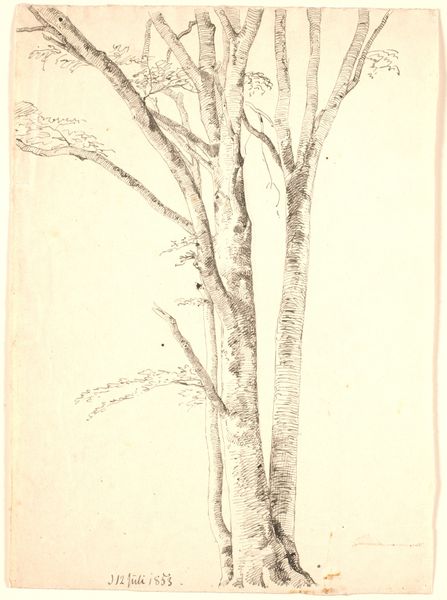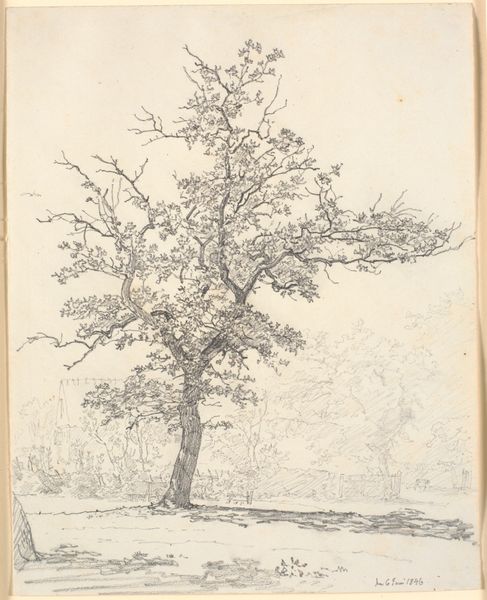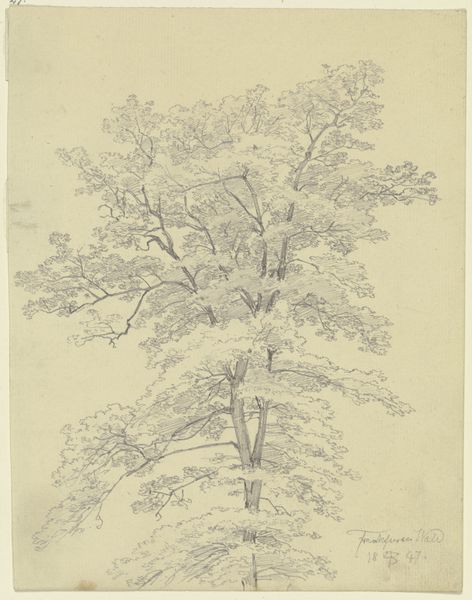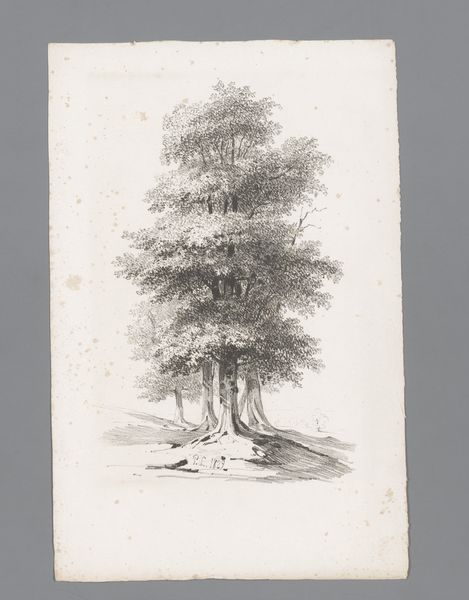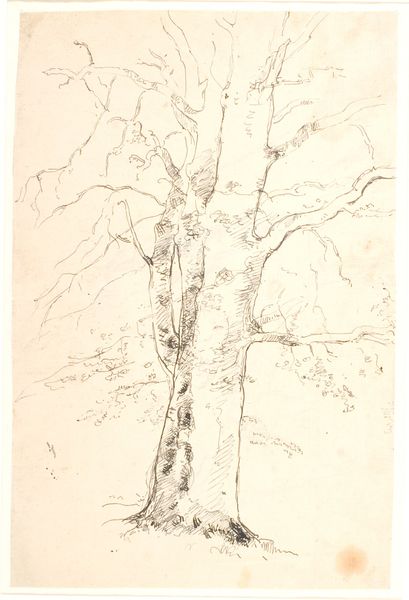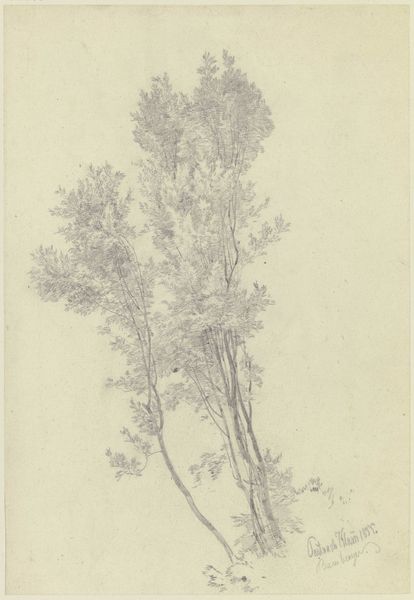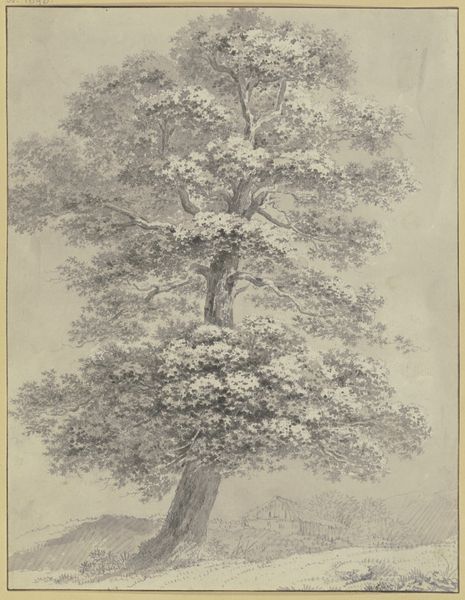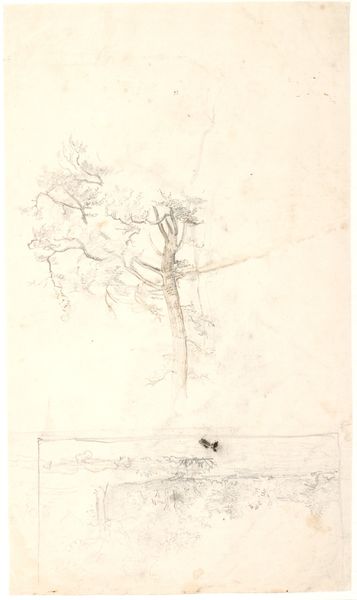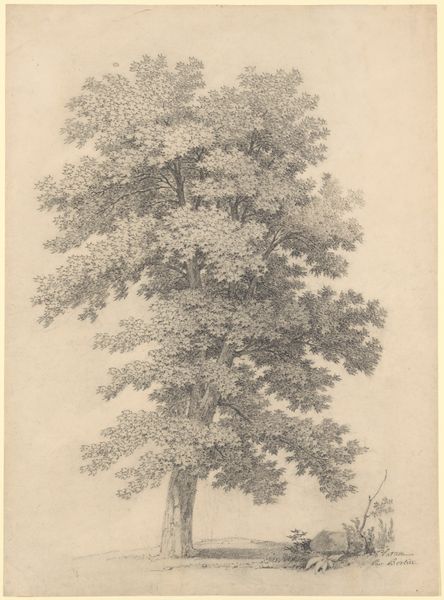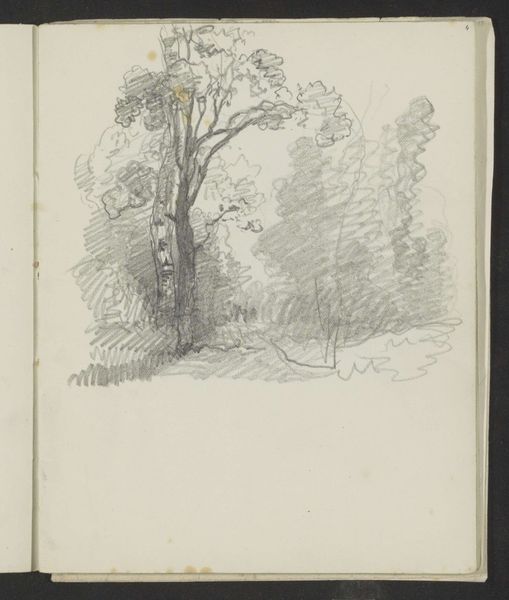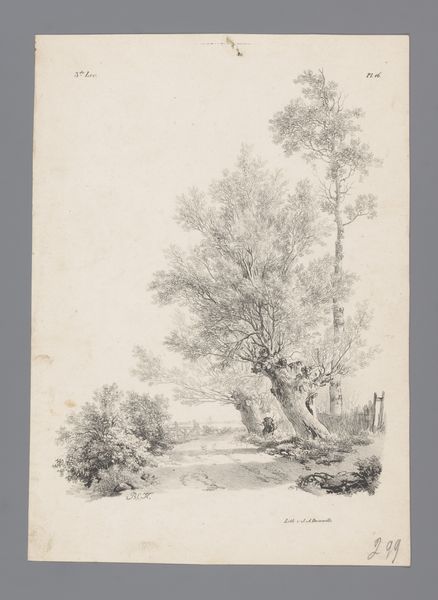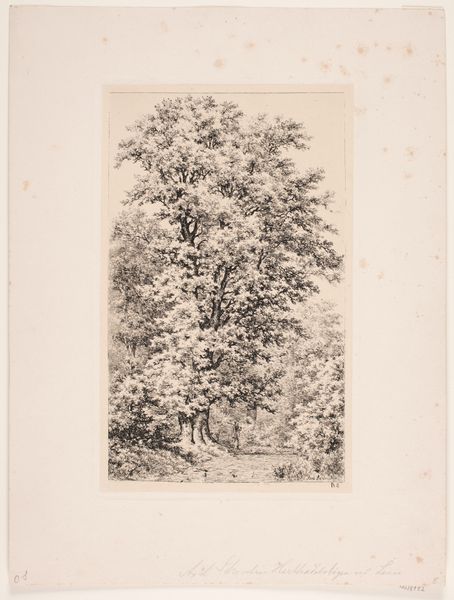
drawing, ink
#
drawing
#
pen sketch
#
landscape
#
ink
#
romanticism
#
line
Dimensions: 366 mm (height) x 266 mm (width) (bladmaal)
Curator: Here we have a study of trees rendered in ink, a pen sketch by P.C. Skovgaard, circa 1847. It is a drawing, currently residing here at the SMK. Editor: My first impression is one of graceful melancholy. The tall, slender trees reach skyward, but the delicate, almost tentative lines convey a sense of fragility and the fleeting nature of beauty. Curator: That's a keen observation. Skovgaard was working within the Romantic tradition. Consider the historical context: landscape painting at this time became a vehicle for expressing national identity and celebrating nature as sublime and spiritually uplifting. Editor: Absolutely. And, if we're thinking about national identity, we must also examine whose identity is being centered and whose stories are absent. This piece speaks to the Danish landscape, but what about the voices and histories of marginalized communities within that landscape? Curator: It's a valuable point, inviting us to consider the politics of representation even within seemingly "neutral" landscape art. Skovgaard focuses on the idyllic natural environment, it omits the socio-economic disparities of rural life, say the struggles of farmers or landless peasants. Editor: Indeed. It's interesting how the artist employs such a restrained palette, just ink on paper. It reinforces the solemn mood, but does the minimalism also sanitize reality? The Romantic era was rife with contradictions as it turned from revolutionary fervor to empire, so it might bear in mind that Skovgaard’s landscapes elided the complexities and exploitations present at that time. Curator: I concur. Although Skovgaard's mastery is visible, we need a holistic examination. The romantic gaze often idealized a simpler life, inadvertently overlooking the more intricate elements of reality. It does ask us how we view these artworks now in relation to climate emergency—it is a far cry from current discourse on saving our national landscapes, and what that now really entails. Editor: Looking at it now I ask myself, what does it mean to see trees through an activist lens, advocating for reforestation, preserving these age old species? Curator: Thank you for drawing attention to this point; let's leave listeners reflecting on Skovgaard's legacy and its position in shaping—or perhaps even reshaping—contemporary discussions. Editor: Agreed, encouraging further introspection on nature and narratives that they shape.
Comments
No comments
Be the first to comment and join the conversation on the ultimate creative platform.
